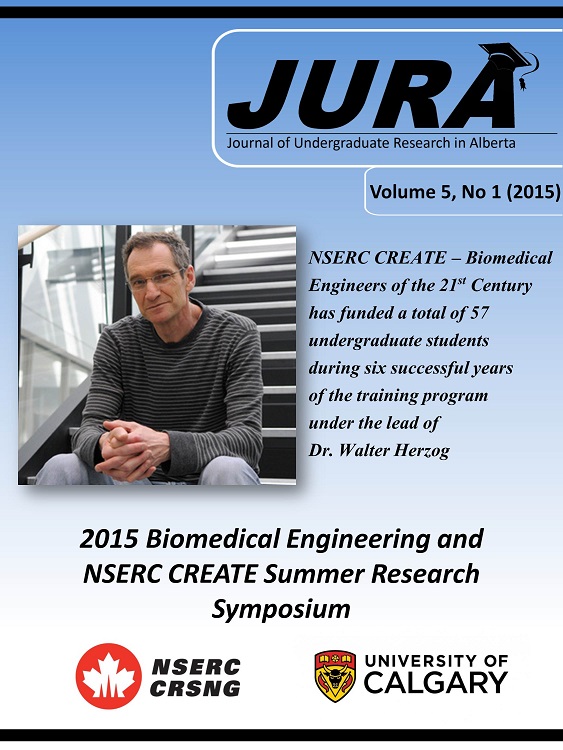DYNAMIC VALIDATION OF TIBIOFEMORAL KINEMATICS MEASURED USING A DUAL FLUOROSCOPY SYSTEM: A MARKER-BASED APPROACH
Keywords:
validation, dual fluoroscopy, tibiofemoral kinematicsAbstract
INTRODUCTION
Knee joint cartilage degeneration in post-traumatic osteoarthritis is initiated at the point of injury and progresses through abnormal movement mechanics [1]. Anterior cruciate ligament rupture influences the development and progression of osteoarthritis [1], however the specific in vivo effects of abnormal bone and joint kinematics and kinetics on human cartilage health remain largely unknown. Quantifying in vivo knee kinematics with submillimeter accuracies may elucidate injurious movement alterations. Dual Fluoroscopy (DF) allows for accurate, high-speed, and non-invasive skeletal kinematics assessment, but requires validation. The aim of this project was to quantify the in vitro accuracy and precision of a high-speed dual fluoroscopy system for measuring 6 degree of freedom (DOF) knee kinematics obtained from a marker-less 2D-3D registration approach as compared to the gold standard marker-based method. For this preliminary work, we hypothesized that the precision of inter-bead 3D Euclidean distance measurement is less than or equal to 0.10 mm [2].
METHODS
Upon approval by the local ethics committee, one female cadaveric human leg was obtained through the local body donation program. Four 3mm metal beads were surgically implanted in the distal femur and proximal tibia. Thereafter, the limb was scanned using computed tomography (CT). Following imaging, the soft tissues of the proximal shaft of the femur were dissected to expose the bone and the femoral head was removed. The proximal shaft of the femur was then fixed in a custom-made metal cylinder using fixation screws and potted using polymethyl methacrylate (PMMA). The free end of the metal cylinder was in turn fixed to an articulated 6 DOF tripod mount (Manfrotto, Italy). In the DF laboratory the limb was suspended in the DF field of view using a custom steel frame. A rope pulley system, fixed around the ankle joint, was used to manipulate the limb. DF images were acquired at 60 Hz during manipulation of the limb into knee flexion. All images were distortion corrected and calibrated using established procedures. Marker-based tracking was conducted on 75 DF frames using in-house software to determine the 2D coordinates of the bead centroids in each image pair. Subsequently, a modified direct linear transform was applied to obtain the 3D bead centroid coordinates. Matlab (MathWorks, v2014b, USA) code was written in order to determine the Euclidean distance between beads.
RESULTS
Table 1: The mean distance between beads in the femur and tibia ± SD (mm) calculated over 75 DF frames. Right: Camera 1 DF image demonstrating the numbering of beads.
DISCUSSION AND CONCLUSIONS
The data indicated inter-bead distance variabilities consistent with previously observed system errors (for static imaging), when investigating a moving limb (Table 1). The observed variations could be due to multiple contributors. A lack of bead sphericity and bead deformation, as a result of surgical bead implantation, may have caused erroneous bead centroid estimates. Further, DF image distortions may have persisted even after distortion correction, contributing to observed error. Future steps include improved image calibration using a sophisticated bundle adjustment algorithm to further reduce system errors [3].
Downloads
References
2. Lohmander et al. AM J Sports Med. 35:1756-69, 2007.
3. Sharma et al. J Biomech. 48:2181-5, 2015.
Downloads
Published
Issue
Section
License
Authors retain all rights to their research work. Articles may be submitted to and accepted in other journals subsequent to publishing in JURA. Our only condition is that articles cannot be used in another undergraduate journal. Authors must be aware, however, that professional journals may refuse articles submitted or accepted elsewhere—JURA included.


